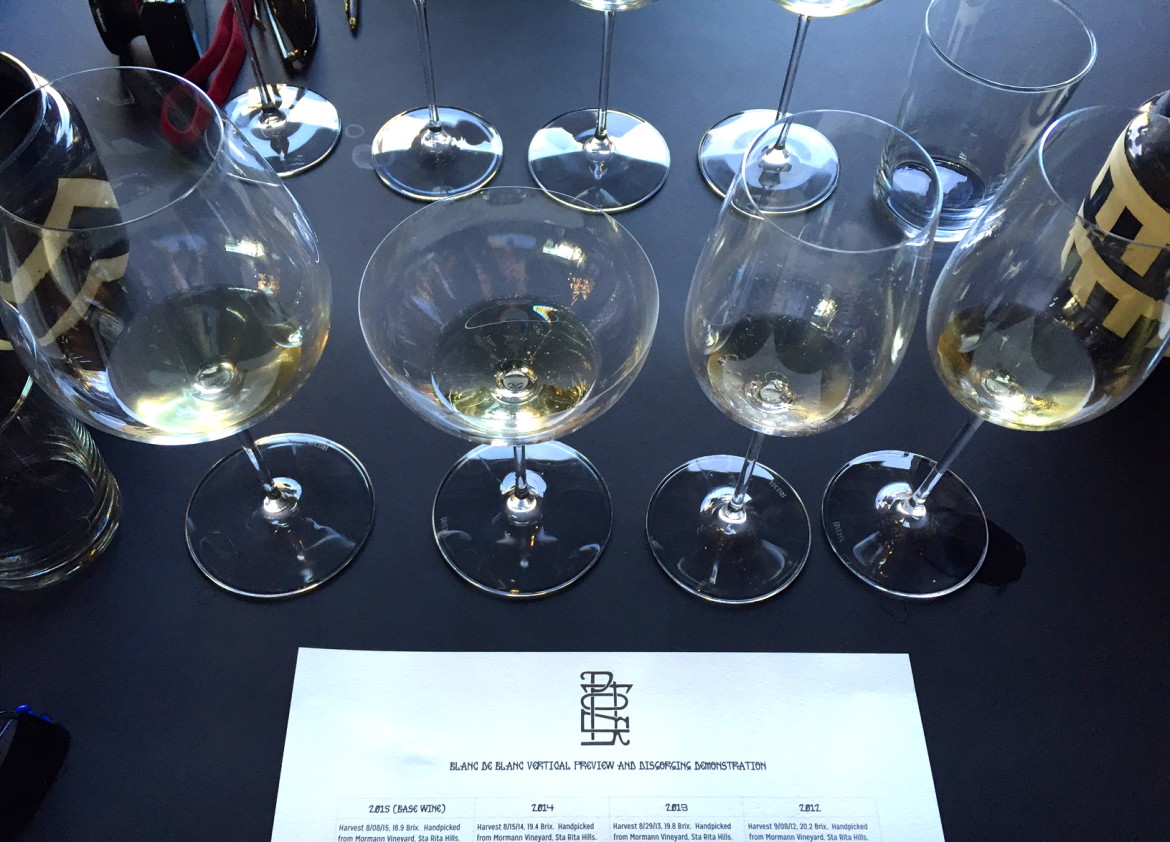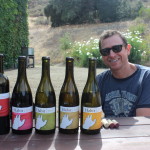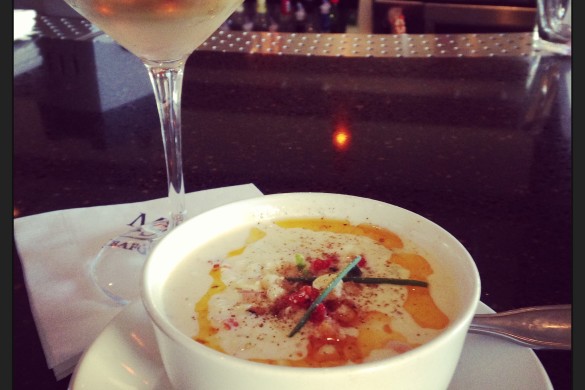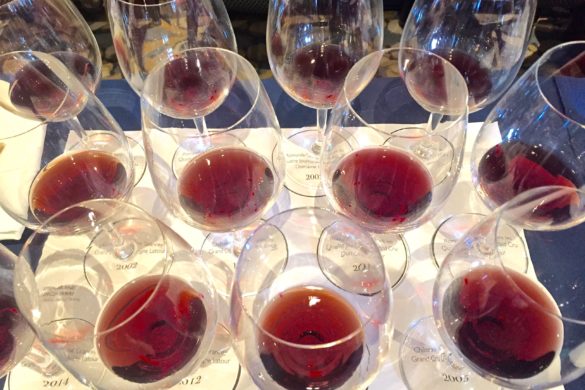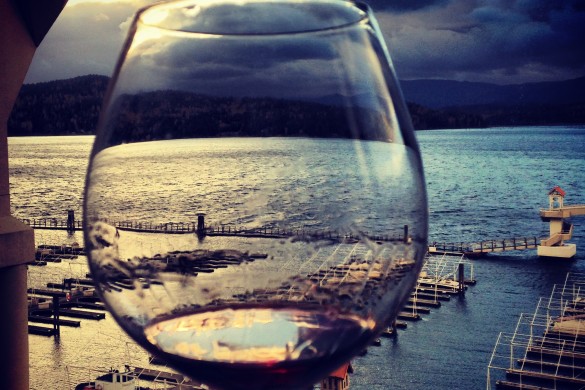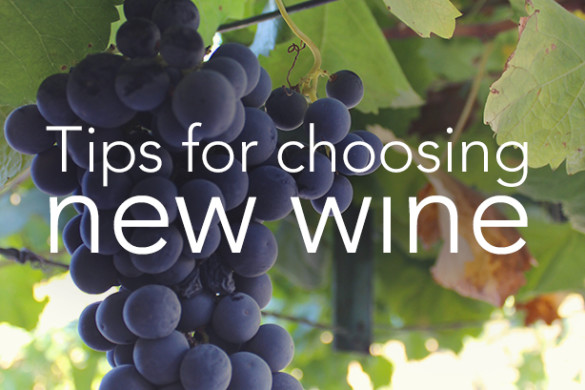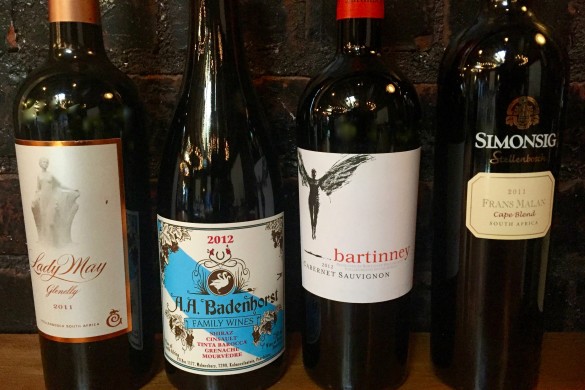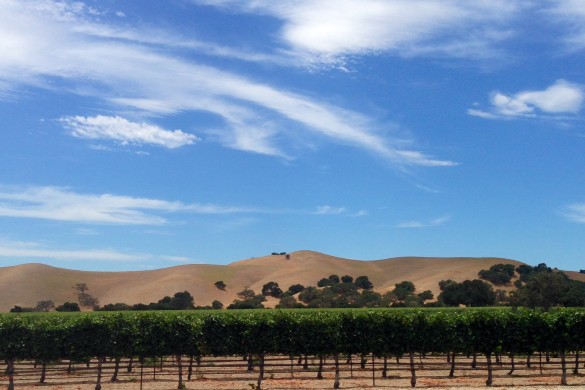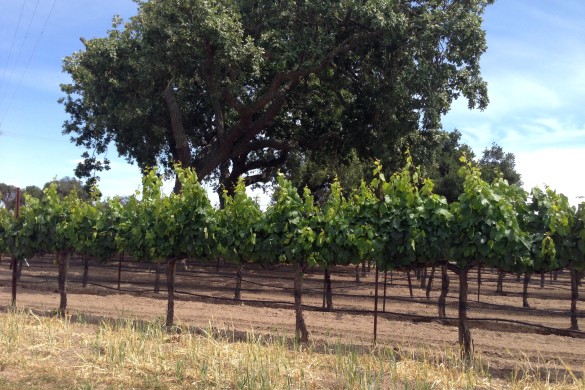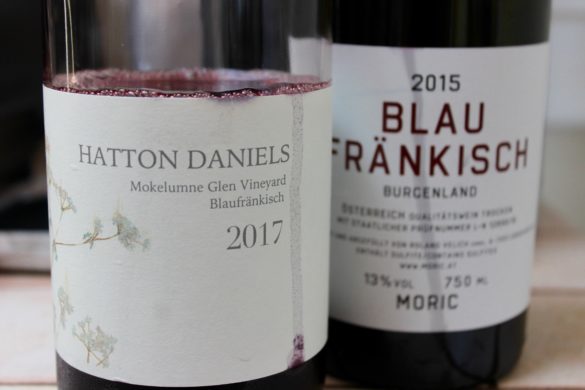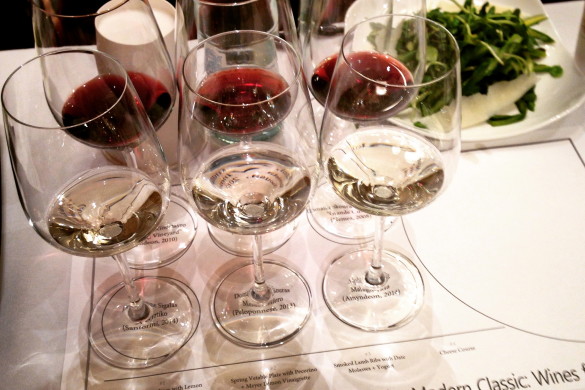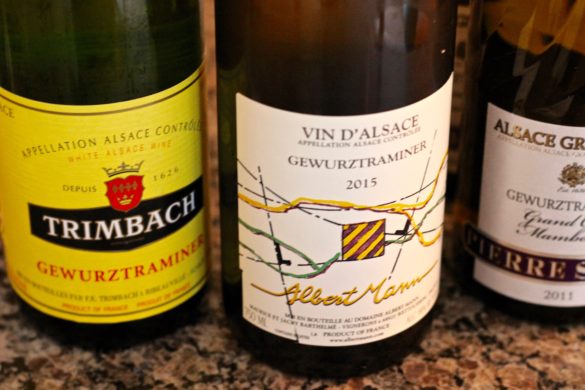It’s December, which means it’s bubbles season! With Christmas only a few days away and New Year’s Eve around the corner, I have no doubt that there will be some sort of sparkling wine (Cava, Prosecco, Champagne…) in your near future. So it’s especially fitting that I recently attended a sparkling wine tasting and disgorging demonstration at one of Santa Barbara’s newest wineries, Potek Winery. If you missed my post on Potek Winery, it’s an awesome new winery and tasting room in the newly developed wine/beer/food hub known as The Mill.
Potek produces single-vineyard Riesling, Grenache, Pinot Noir and Syrah from Santa Barbara County, but they also just released a sparkling wine just in time for the holidays! I sat down with a few other wine and food industry folk to taste the 2012 Sta. Rita Hills Blanc de Blanc ($65), a dry yet rich 100% Chardonnay sparkler with lovely notes of bread dough and caramel. We also got to preview the upcoming 2013, 2014, and 2015 vintages (the 2015 being in its base wine phase) and examine the different stages of the wine, which all came from the same vineyard and are made with the same technique. Pretty cool to see how the textures and aromas change over time. All good stuff! Afterwards, owner Dave Potter walked us through the disgorging process before we disgorged our own bottles.

If I’ve lost you after this talk of ‘base wine’ and ‘disgorging’, then let me briefly explain. Every sparkling wine made in the Traditional Method (aka Méthode Champenoise) starts as a base wine, which is a still (not sparkling) high acid white wine. To transform this base wine into sparkling wine, the wine is bottled and then a mixture of yeast and sugar is added and then sealed. A second fermentation begins in the bottle as the yeast starts to break down the sugar, creating carbon dioxide that builds up pressure within the bottle. Those gases then become absorbed into the wine — hence, the bubbles in your sparkling wine.
As the fermentation runs its course, the yeast dies off and becomes sediment in the bottle. The dead yeast (known as lees) are actually an important part of the Traditional Method, since they impart nutty, toasty yeast flavors desirable in many sparklers. Bottles are then aged ‘on the less’ with the top facing down in an A-frame rack so the sediment gathers near the cap. When the wine has aged the desired amount of time, a process known as ‘disgorging’ is used to remove the sediment from the bottle. Basically, the cap is removed and the pent up pressure shoots the sediment out of the bottle. Afterwards, since some of the wine has been lost during disgorgement, the bottle is immediately topped off with the same or similar cuveé and sometimes a little bit of sugar, which is called ‘dosage,’ then resealed as soon as possible. Here’s the machine we used to disgorge and top off on the left, and reseal on the right.
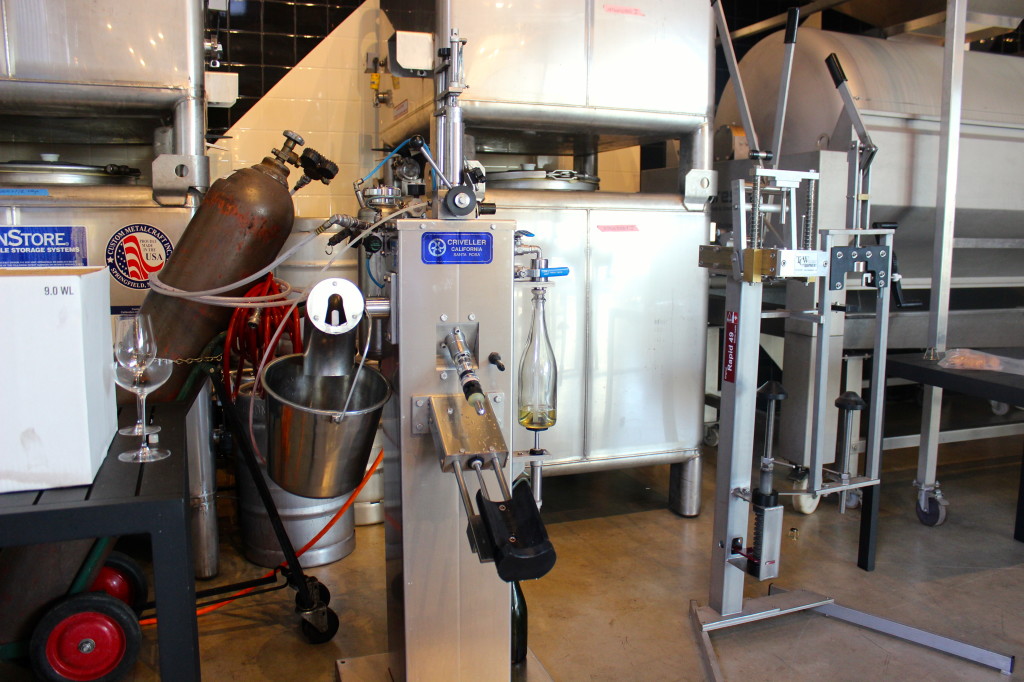
For my first time disgorging my own bottle, I did pretty well! Putting on the label, on the other hand, was apparently a little more challenging… as evident by my terrible attempt below:
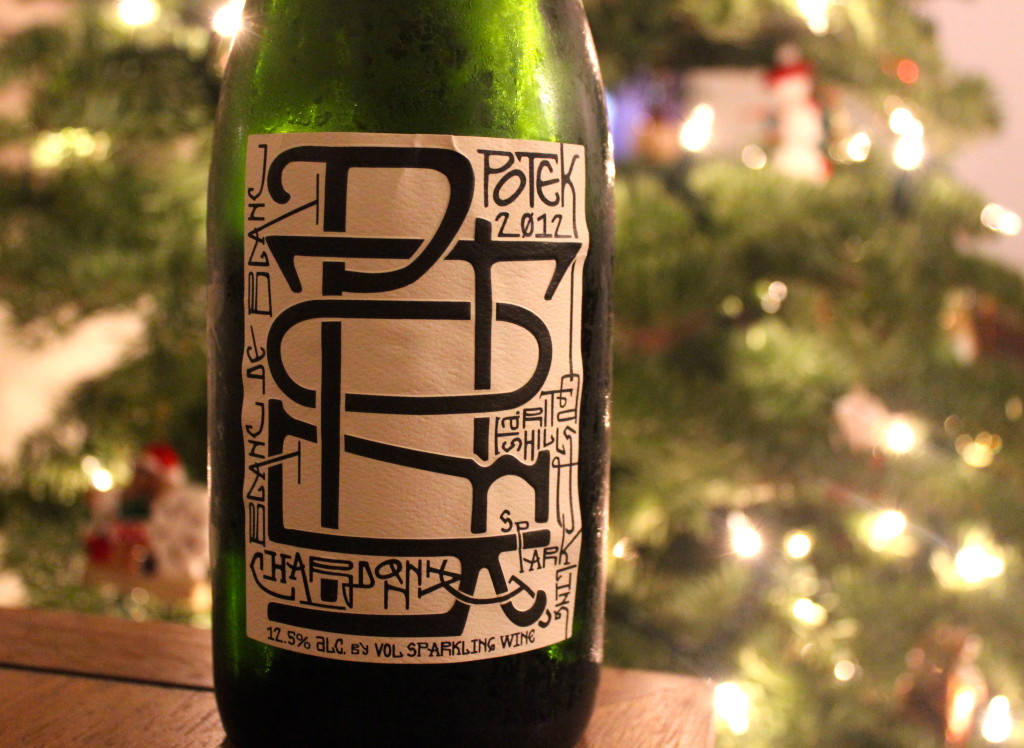
So now you know a little bit about what goes into making Champagne, as well as many other sparkling wines that use this method. It’s certainly a time intensive process, but so worth it! I hope you get to celebrate the holidays with some delicious sparkling wine yourself, be it from Santa Barbara or elsewhere! Cheers.

